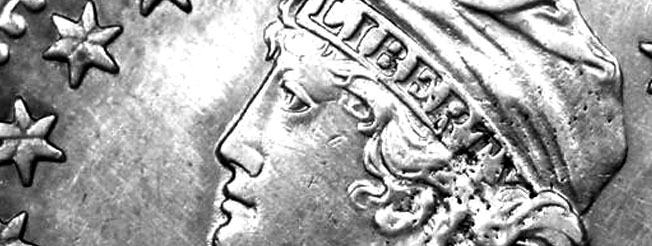Bust Quarters
- Minted since the late 1700s
- Most important for US coin history
- Draped bust quarters and capped bust quarters
- 25 US Cents

Bust Quarter Coins
Minted between 1796-1838
Bust silver quarters were first issued by the United States Mint in 1796 and designed by engraver Robert Scot. The coin was discontinued in 1806 due to a lack of demand for this denomination, but not before it had been struck with three different designs:
• Draped Bust
• Small Eagle and
• Heraldic Eagle
The coins are among the rarest and valuable US coins ever produced. Depending on the condition, they can be worth anywhere from $500-$10,000 or more each.
In fact, the 1796 Draped Bust silver quarter is one of only a few US coins to have sold for more than $300,000 at auction.
The coin’s name comes from the depiction on its obverse side of Lady Liberty wearing a loose-fitting garment with her left breast exposed.
The image was based on a Gilbert Stuart portrait of Washington that appeared on the US $20 gold piece.
But although it is commonly referred to as a “Bust Silver Quarter,” this coin type never actually bore such a designation in its lifetime. It’s merely a modern-day name bestowed upon the coin.
The coin’s designer, Robert Scot, was the first Chief Engraver of the United States Mint.
He is also credited with designing several other famous US coins like the half-cent coin (1793) and three-cent silver (1851).
Scot’s design for the quarter is thought to have been inspired by another coin that he had seen in Europe.
Specifically, it was modeled after a silver medal designed by French artist Jean-Pierre Droz (1746–1823), depicting Lady Liberty wearing an Indian headdress and carrying a spear.
The coin’s obverse shows a right-facing portrait of Liberty wearing a cap and laurel wreath, like what Roman Emperor Marcus Aurelius was once depicted as on his coins.
This design is thought by some numismatic experts to be based on an earlier bust of Liberty created by Italian sculptor Giuseppe Ceracchi (1751–1802).
The reverse side of the coin shows a heraldic eagle with wings outstretched.
It holds an olive branch and arrows in its beak, while on the coins’ back is a large American shield over a small group of clouds.
The heraldic eagle design was created by Scot and based on a similar rendition of an eagle featured on the Great Seal of the United States since 1782.
For some unknown reason, these coins were struck with different dies for several years from 1796 through 1801.
Therefore, there are five different varieties of Bust Silver Quarters, which can be distinguished from one another by the number and arrangement of stars on their obverse side as well as the size and style of their eagle’s wings on the reverse.